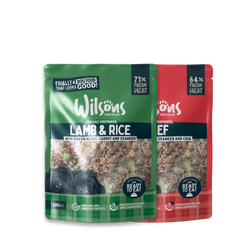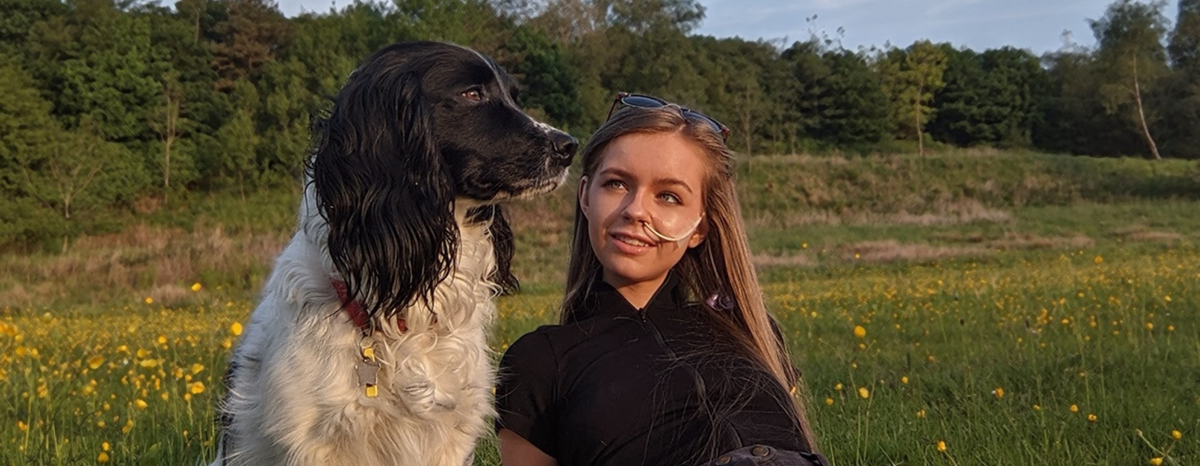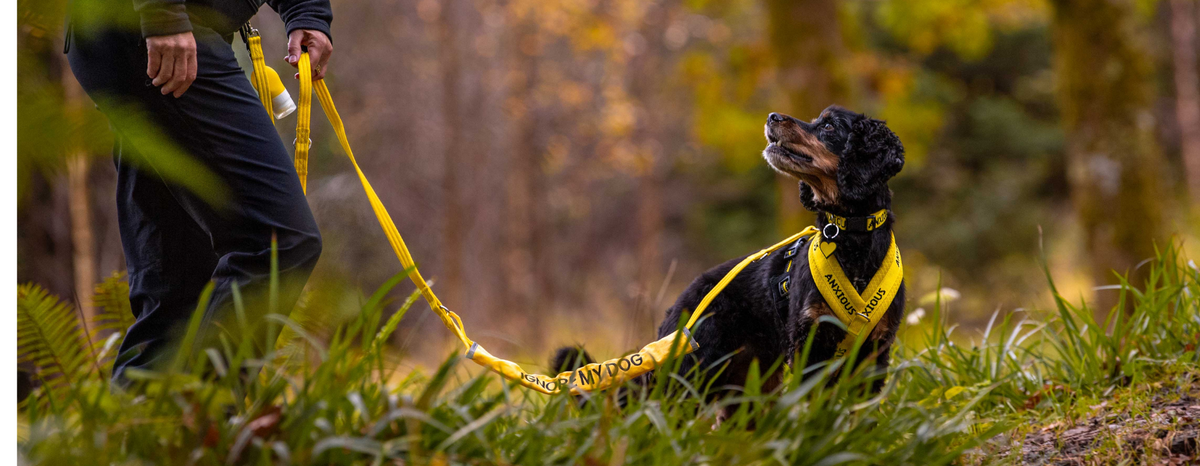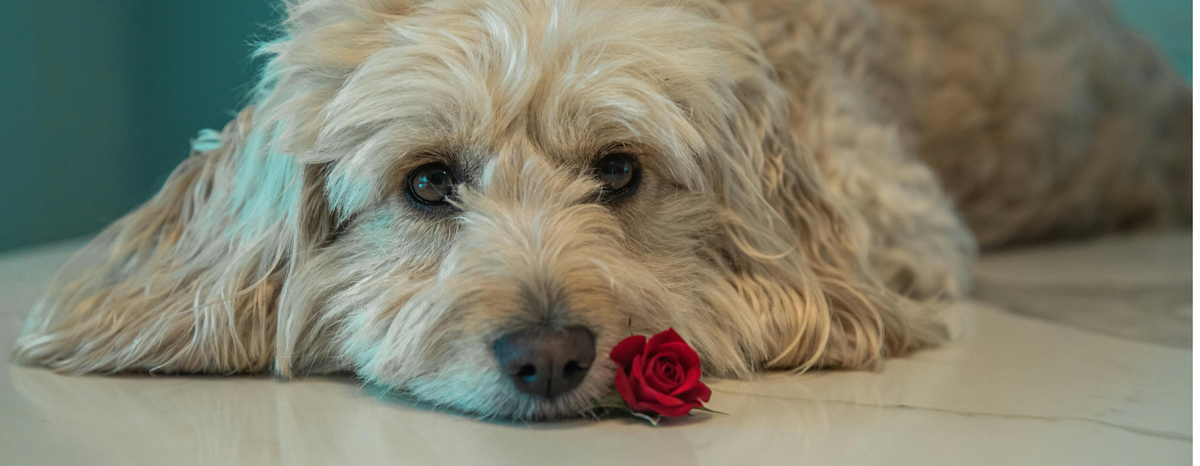
Why Does My Dog Have Bad Breath?
WRITTEN BY
Holly Kinmont
Share
Bad breath is something that afflicts dogs just like it does us humans. But while correcting a person’s bad breath may involve an awkward conversation, correcting a dog’s smelly breath requires a little more thought.
It seems that most of our furry friends are affected by canine halitosis at some point. But what exactly causes it, and what can be done to resolve it?
Not So White Pearly Whites

Dental and oral hygiene issues are by far the most common causes of bad breath in dogs. If their pearly whites aren’t so white, or indeed pearly, it’s a surefire sign that a stinky breath could be about to set in. Canine teeth aren’t too dissimilar to human teeth, with the potential for plaque and tartar build up to lead to the growth of harmful bacteria. This harmful bacteria can multiply and result in, you guessed it, bad breath.
The first sign of this build-up is quite visible in your dog’s mouth, with the teeth appearing increasingly yellow and shrouded in an equally yellow substance (the plaque). If this build up continues, it can lead to periodontal disease, causing gums to push away from the teeth, leading to additional areas for bacteria to develop, and the potential for infections, cavities and loss of teeth. In these cases you’ll notice your dog’s gums becoming increasingly inflamed. That’s one very unhealthy mouth, and certainly one that will result in unbearably smelly breath.
If your pet’s teeth have reached this stage, a trip to the vet is a must. They’ll examine the teeth and decide whether just a deep clean is all they need, or whether dental surgery is required to get their mouth back on track. As for slightly untidy teeth, keep reading to discover all the ways you can keep your dog’s mouth minty fresh.
An Impromptu Snack, And Other Causes
Teeth and gums aren’t the only factor to consider in keeping bad breath at bay. Diet is also key, and as you’ll be acutely aware as a dog owner, our four legged friends often have an appetite for some of the most unappetising ‘delicacies’.
It’s not too uncommon for dogs to treat themselves to a delightful snack of

decomposing faeces, whether it’s from themselves or indeed another animal. If they happen to encounter a piece of animal carcass, or rotting food left out in the sun, they may also decide these too are yet another tasty snack they should eat at once. Not only are such eating habits extremely unhealthy, with a variety of illnesses that could occur as a result, it’s no surprise to learn they could also lead to a bad breath. We’ll show you what to do about these eating habits shortly.
There are also far more concerning causes of canine halitosis which all warrant a trip to the vet. If their breath smells like urine, it could be a sign that your dog’s kidneys aren’t functioning properly, meaning they’re likely suffering from kidney disease. If they’re throwing up and experiencing bouts of diarrhoea alongside a bad breath, this could be a sign of liver disease. Both of these conditions are serious, and necessitate an urgent trip to your vet.
Kick The Stench To The Bench
If you’re getting through cans of air freshener like there’s no tomorrow, you’ll be very happy to know there are plenty of easy ways to resolve your dog’s bad breath. As long as it’s clear your dog isn’t suffering from a more serious health condition, such as those outlined, there are a variety of simple measures you can take to improve the smell of your pet’s breath.
Here at Wilsons we’re aware of some pretty incredible dog trainers, but so far we haven’t found one who can teach a dog to brush his or her own teeth. For many dogs, chewing on dry foods and dental chew sticks is enough to keep their teeth clean. But what if this isn’t enough? In cases of persistently dirty teeth, you may have to step in by brushing their teeth for them.
Be sure to use a toothbrush and toothpaste specifically designed for dogs (available at your favourite pet shop), and choose a time and place they’ll be calm enough to handle your brushing. As for the brushing itself, introduce it gradually and progressively. First get your dog used to the taste of the toothpaste by handing them some on your finger. If they like the taste, great, but if they resist it, try a different flavour. Once they like the toothpaste, get them used to the brushing by slowly introducing the toothbrush to each part of their mouth, one section at a time. This will help them gradually get used to the toothbrush in their mouth, allowing you to get brushing. Brush in a circular motion, and be sure to give them a treat at the end - a little positive reinforcement will go a long way next time you brush! Brush as often as you can, whether it’s once every few days, or if they’re especially cooperative, once a day.
And as for those unsavoury ‘snacks’, the simplest approach is to ensure any faeces or uneaten bits of food are cleaned up as soon as is practical. And when you’re out and about, be sure to shoo your pooch away from any unpleasantries they seem a little too keen to sniff.
Keep It Fresh
A foul smell is usually a sign of something else untoward, and that is certainly true in the case of a dog with bad breath. Thankfully most cases of canine halitosis aren’t caused by serious issues, and can easily be fixed with simple measures such as brushing their teeth.
As long as they’re showing no other symptoms which warrant further investigation, following our simple stench-busting tips will have your four legged friend smelling fresh in no time. And you’ll be able to take that clothes peg off your nostrils.
A healthy diet contributes to a well functioning stomach, and subsequently to keeping bad breath at bay. Our premium raw food is made with only the finest natural ingredients, helping to ensure all-round health, including a well functioning digestive system.





